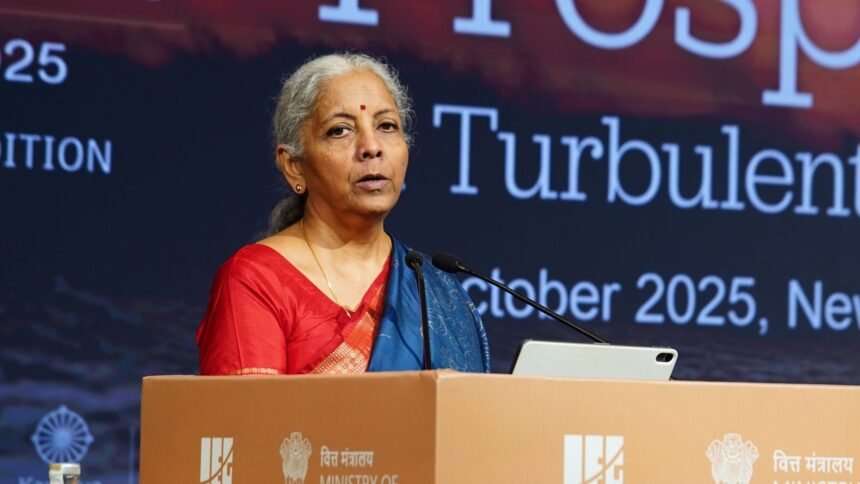New Delhi: At the Economic Conclave held today, Finance Minister Nirmala Sitharaman reaffirmed the government’s commitment to upping capital expenditure across states as a lever to support India’s economic momentum. According to Reuters, she emphasized that despite global headwinds, the economy has shown resilience and must avoid complacency.
Sitharaman noted that the relatively steady share of consumption and investment in India’s GDP has helped insulate growth from external shocks. Reuters further reports that the government has earmarked a record ₹11.21 trillion for infrastructure development in fiscal year 2025-26 — a move intended to catalyze broader investment and job creation.
Export Pressures & Tariff Hurdles
The minister’s remarks come amid fresh trade headwinds. The United States has doubled tariffs on certain Indian imports (including textiles, leather, and chemicals) to as much as 50%, citing India’s continued import of Russian oil. Reuters describes this move as one of the steepest tariff hikes among U.S. trading partners.
Experts warn that these tariff measures could dampen India’s export growth, undercutting some benefits of increased capital spending. Still, the government appears undeterred, seeing this as a moment to lean on internal demand and infrastructure-driven multipliers.
Economic Trends & Outlook
Recent data underscores the urgency of a capital-spending push. According to LiveMint, in the April–August period of FY 26, capital expenditure by the central government surged to ₹4.32 trillion, which is already 38.5% of the full-year target a clear sign of front-loading.
Meanwhile, market watchers note that while the RBI has held its policy rate at 5.5% for now, it may consider a reduction in December, depending on how tariff shocks and tax policy changes play out. Reuters mentions this possibility in its coverage.
Moreover, a government survey highlighted by The Times of India suggests a contrasting picture in the private sector: corporate capital spending is expected to shrink by nearly 25% in 2025-26 compared to the current year. This divergence creates both risk and opportunity — the state must step in decisively to offset private retrenchment.















